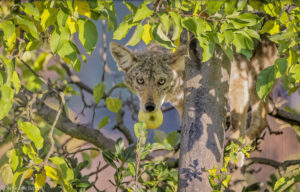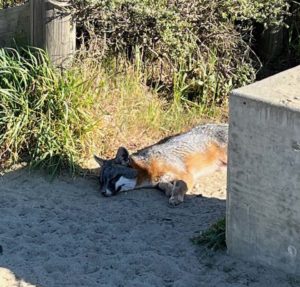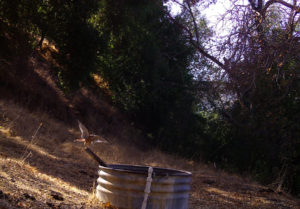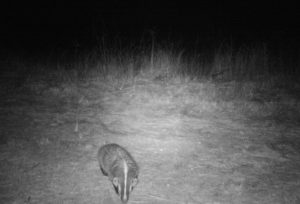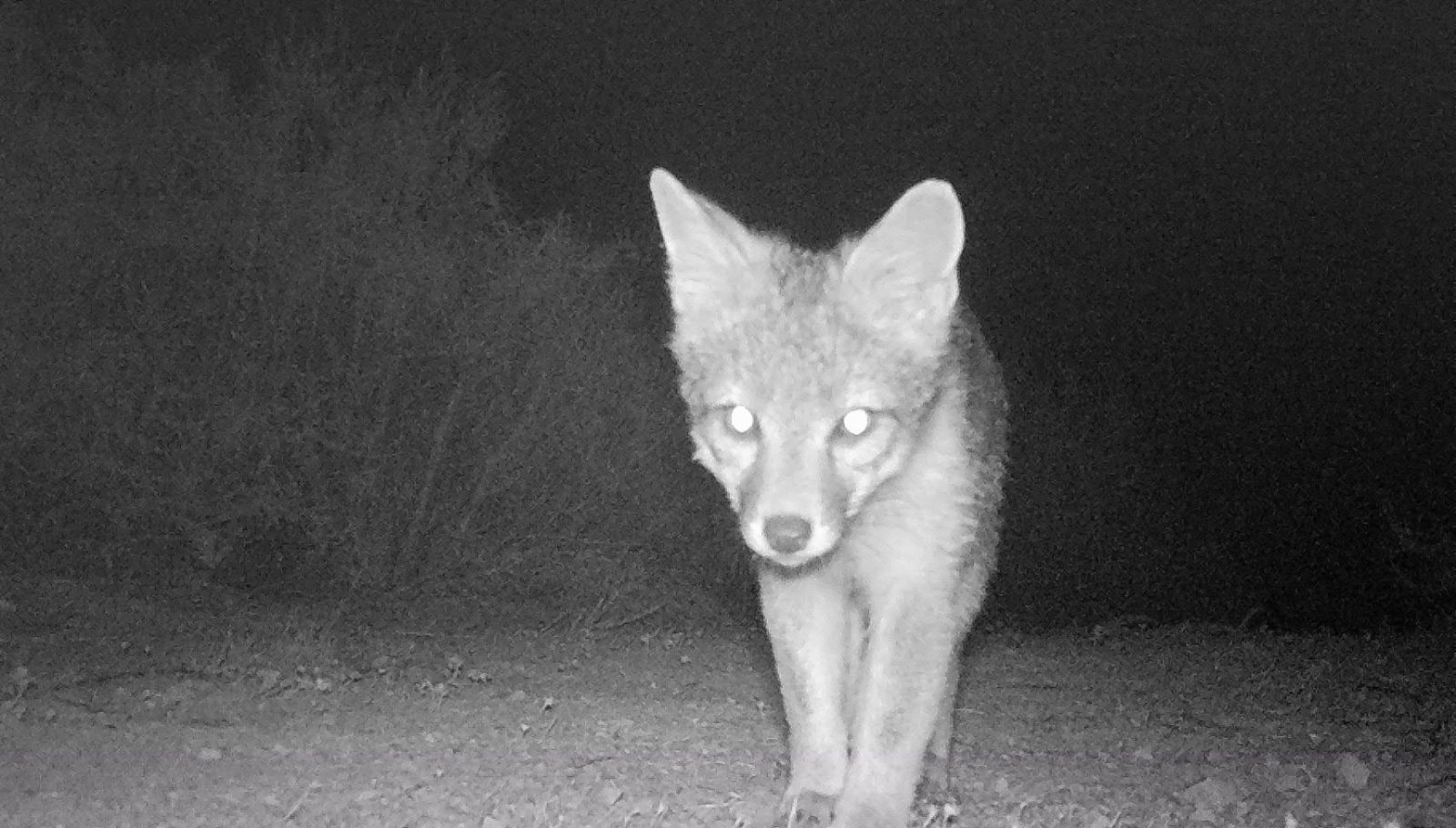
A fox seems to be strolling up to the hidden camera, perhaps spotting it, or perhaps just wandering by. The camera, placed by Susan Ferry, is deep within Henry W. Coe State Park, the largest state park in Northern California, with plenty of space for foxes to roam and survive.
Camera traps are one of the best ways to see a gray fox, unless you’re willing to get up very early or stay up late. Gray foxes range from nocturnal to crepuscular, which means active during the night, dawn, or dusk. During the day they hide out in burrows or hollows, their small size easily allowing them to curl up and remain hidden. When they’re awake, they prey on small animals, birds, and insects, and love to snack on fruit when it’s in season.
Despite their unfriendly hours, gray foxes aren’t an uncommon sight in the Bay Area, particularly when they have pups. Sometimes people mistake them for cats or dogs, but a second glance affirms that they’re indeed foxes, speckled gray on top with rust colored throats and legs. If someone is extra lucky, they may spot what distinguishes the gray fox from all other canines — their ability to climb trees.
Habitat fragmentation and secondary poison remain two of the largest threats these charismatic creatures face. A small population that is unable to spread out will quickly dwindle; researchers recommend creating wildlife corridors across major highways and roads to allow safe passage. As humans expand, land that’s good for the foxes often contracts, leaving them nowhere to go.
Poisoning also goes hand in hand with a burgeoning human population. We don’t like rats, so we leave out poison. The rats eat the poison and get sick, crawling off to die. The foxes find the rat and think they’ve scored a free, easy meal. Instead, they take the poisoned rat and subsequently get poisoned themselves, often dying from it. It’s a major problem here, according to wildlife officials. There’s a way to solve this as well; rather than relying on chemicals, creating a habitat for natural predators is a safe way to keep the rats down and the foxes safe. Nesting boxes for owls and hawks are inviting places for the predators to hang out, and though they’ll sometimes prey on the foxes, it’s part of the natural cycle of life, rather than a human hindrance.
In Coe, things are a bit safer. The landscape is best described as rugged, and the population seems to be healthy, if not downright frisky. Ferry recalls one particular fox who seemed to take umbrage with one of the camera traps. Footage caught him rubbing against it repeatedly, and then suddenly, the camera caught nothing but the sky. She put it back and went to check back on it again and found it on the ground again. Clearly there’s at least one fox out there with a healthy spirit, and by working together to make our homes and businesses more environmentally friendly, we can help that fighting attitude spread.

